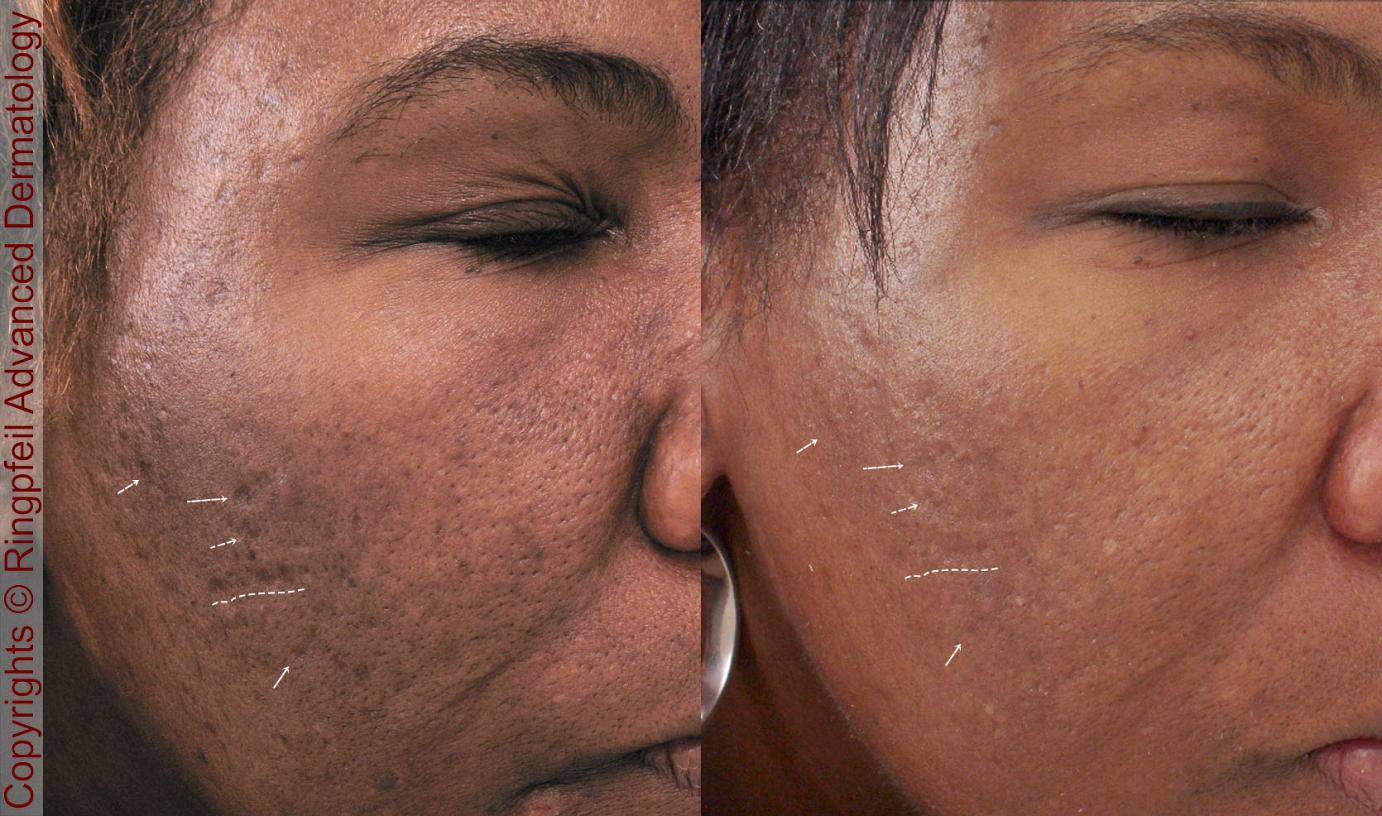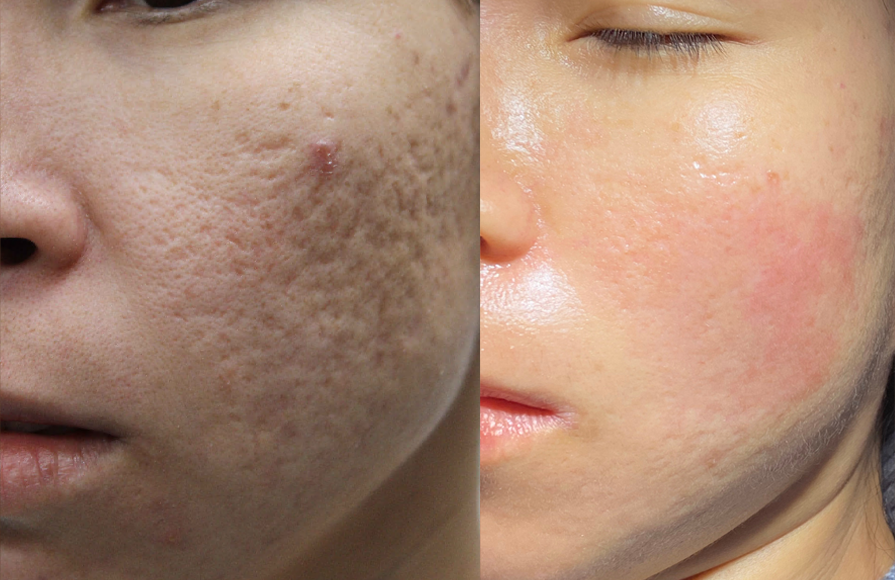Efficient Acne and Acne Scars Treatment: Clear Your Skin with Self-confidence
Efficient Acne and Acne Scars Treatment: Clear Your Skin with Self-confidence
Blog Article
Exploring Skin Disease: Dealing With and determining Acne Scars for Healthier Skin
Acne marks stand for a substantial issue for people seeking to keep healthy and balanced skin, as they can impact both look and self-confidence. Recognizing the numerous kinds of marks, from atrophic to hypertrophic, is necessary for identifying ideal treatment choices.
Recognizing Acne Scars
Comprehending acne marks is essential for any individual who has experienced serious acne, as these marks can have an enduring influence on both physical appearance and mental wellness. Acne marks form when the skin undergoes inflammatory reactions throughout energetic acne sores. The extent of scarring is frequently influenced by factors such as the type of acne, its duration, and private skin features.
The body's all-natural recovery procedure can cause either atrophic scars, which look like depressions in the skin, or hypertrophic scars, which are raised and result from overproduction of collagen. In addition, the psychological toll of acne scars ought to not be ignored; lots of people report sensations of embarrassment, stress and anxiety, and reduced self-worth. This psychological problem can impact social interactions and total lifestyle.
Resolving acne scars needs an extensive understanding of their formation and impact. Awareness of the potential for long-term effects connected with unattended marks can inspire individuals to seek appropriate therapies. Early treatment and effective monitoring approaches can dramatically boost skin appearance and enhance emotional durability, stressing the value of comprehending the complexities bordering acne scars.
Types of Acne Marks
Acne scars can be classified into distinct kinds, each displaying unique characteristics and needing specific therapy techniques. The primary kinds of acne marks include atrophic, hypertrophic, and keloid scars.

Hypertrophic scars, in comparison, are raised above the skin degree and are the outcome of too much collagen production during the recovery procedure. They usually remain within the limits of the initial acne sore. Keloid marks are comparable but extend past the original injury website, forming larger, raised areas that can be itchy or excruciating.
Comprehending these sorts of marks is essential for selecting appropriate treatment options. Different scars may respond better to specific therapies, such as laser therapies, fillers, or surgical interventions, highlighting the significance of a tailored method to acne scar administration.
Recognizing Your Marks
Acne marks usually drop right into two classifications: hypertrophic and atrophic scars. These can better be categorized right into ice-pick marks, boxcar scars, and rolling marks, each displaying distinct features and needing different methods for assessment - acne treatment for sensitive skin.
Hypertrophic scars, on the various other hand, are raised and take place due to extreme collagen production during the healing procedure. Recognizing the certain functions of your marks-- such as size, texture, and deepness-- is crucial for proper recognition. Additionally, think about the distribution of scars throughout your skin, as this can indicate the intensity and period of the acne condition.
Engaging with a skin doctor can offer beneficial insights into the nature of your marks, assisting in the differentiation in between numerous types. A complete understanding of your scars will eventually bring about a much more tailored and effective therapy strategy, making certain a more clear and much healthier complexion.
Treatment Choices Readily Available
Identifying the particular type of acne scars existing on your skin prepares for discovering effective treatment options. Typical types of acne marks consist of atrophic (clinically depressed), hypertrophic (raised), and post-inflammatory erythema.
For atrophic marks, options such as chemical peels, microneedling, and laser resurfacing are commonly made use of. Chemical peels utilize acids to remove the outer layer of skin, advertising brand-new cell development.
Hypertrophic marks can be treated with corticosteroid shots to flatten the scar or laser therapy to decrease inflammation and enhance appearance. acne and acne scars treatment. Silicone gel sheets and pressure dressings may additionally aid in taking care of elevated scars
In addition, dermal fillers their explanation can temporarily fill out clinical depressions from atrophic marks, while surgical excision may be appropriate for extreme situations. Each treatment option has its advantages and factors to consider, making it necessary to seek advice from with a skin doctor. They can supply customized recommendations based on the type and extent of your scars, as well as your skin kind and general health.
Tips for Avoidance
Efficient prevention strategies can dramatically minimize the possibility of developing acne marks. The first step is to keep a constant skincare routine that consists of gentle cleaning, exfoliation, and moisturizing. Making use of non-comedogenic products assists avoid clogged up pores, which can intensify acne. In addition, integrating topical therapies consisting of salicylic acid or benzoyl peroxide can effectively lessen and handle outbreaks inflammation.
Preventing the impulse to pick or pop acne sores is essential, as this can cause much deeper skin damage and enhance the danger of scarring. Rather, consider utilizing a cool compress or over-the-counter treatments to decrease swelling and inflammation.
Sunlight protection is an additional essential aspect of prevention; ultraviolet (UV) rays can darken scars and impede the recovery procedure. Using a broad-spectrum sun block with a minimum of SPF 30 daily can safeguard the skin and promote even healing.
Last but not least, preserving a well balanced diet plan abundant in minerals, anti-oxidants, and vitamins supports skin wellness and healing. Remaining hydrated and handling stress and anxiety levels can additionally play a considerable duty in decreasing acne flare-ups. By implementing these techniques, individuals can significantly minimize their opportunities of developing acne scars.

Conclusion
In verdict, understanding and identifying acne marks is important for efficient therapy and attaining much healthier skin. Numerous kinds of acne marks, consisting of hypertrophic and atrophic marks, demand certain interventions tailored to specific needs. Therapy alternatives array from chemical peels and microneedling to corticosteroid injections, stressing the importance of speaking with this link a skin specialist. Furthermore, embracing a gentle skincare routine and safeguarding the skin from UV exposure can considerably contribute to the prevention of further scarring and total skin wellness.
The body's natural recovery procedure can result in either atrophic scars, which show up as anxieties in the skin, or hypertrophic scars, which are elevated and result from overproduction of collagen. They are further separated into three subtypes: ice choice scars, boxcar marks, and rolling scars. Acne marks typically fall right into two groups: hypertrophic and atrophic scars. These can better be categorized right into ice-pick marks, boxcar scars, and rolling scars, each exhibiting distinctive attributes and requiring various techniques for evaluation.
Numerous types of acne marks, including hypertrophic and atrophic scars, useful reference demand details treatments tailored to private demands.
Report this page